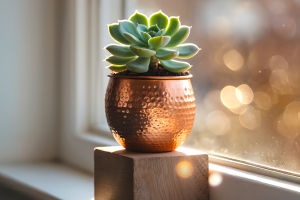Have you ever paused to wonder what exactly distinguishes photography from painting? Both are visual languages that capture moments, evoke emotions, and tell stories.
Yet, despite their shared purpose, they differ fundamentally in technique, perception, and artistic intention.
Today, let's unravel the boundaries that separate—and sometimes blur—the worlds of photography and painting. Whether you lean toward the precision of a camera lens or the expressive brushstroke, this exploration invites you to rethink how we define art itself.
The Origins and Evolution of Photography and Painting
Painting, one of the oldest art forms, dates back thousands of years, evolving through countless styles, from realism to abstract expressionism. It allows artists to interpret the world with complete creative freedom, molding colors, shapes, and textures to their vision.
Photography, however, is relatively modern, emerging in the early 19th century as a technological breakthrough. Unlike painting, photography captures reality through mechanical means—a camera lens records light and shadow instantly. Over time, photography evolved from a mere tool of documentation into a recognized art form, pushing creative boundaries through composition, lighting, and post-processing.
Process and Technique: Creation vs. Capture
A key difference lies in how these arts are created. Painting is an additive process. Artists build images layer by layer, blending pigments, controlling brush strokes, and modifying their work continuously. The process is slow, meditative, and deeply personal, allowing for imaginative interpretation beyond what the eye sees.
Photography is largely a subtractive or instantaneous process—capturing what already exists in front of the lens. While photographers exercise creativity through framing, timing, and light manipulation, the initial image is bound to reality. Digital tools now enable editing and retouching, somewhat narrowing this gap, but the essence remains: photography begins with reality, painting with imagination.
Artistic Expression and Subjectivity
Despite these technical distinctions, both photography and painting are vehicles for subjective expression. A painter can depict surreal scenes or abstract concepts impossible to photograph. Conversely, photographers often choose unique perspectives, motion blur, or unusual lighting to create emotional impact or narrative depth.
Some photographers approach their work as painters, carefully staging scenes, adjusting colors, and retouching images to convey moods beyond mere replication. Likewise, painters may mimic photographic realism, capturing light and detail so precisely that their work resembles photographs.
The Role of Time and Permanence
Time also affects these arts differently. Paintings are typically static and permanent, frozen interpretations meant to endure centuries. Photography captures transient moments—split seconds that can never be exactly repeated.
This immediacy gives photography a documentary power and emotional urgency.
At the same time, paintings invite viewers to linger and interpret layers of meaning at their own pace, offering a more timeless and often symbolic experience.
Blurring the Lines: When Photography Meets Painting
In recent decades, the boundaries between photography and painting have increasingly blurred. Techniques like photo manipulation, mixed media, and digital art combine photographic elements with painterly textures.
Artists like Gerhard Richter have famously combined both, creating photo-based paintings that challenge traditional categories. Likewise, photographic prints can be hand-painted or altered to create hybrid artworks. This fusion enriches the visual arts, proving that creative expression transcends strict definitions.
Which Is More "Art"? A Subjective Question
Is one medium more artistic than the other? Opinions vary widely. Some argue painting demands greater skill and imagination, while others highlight photography’s ability to capture reality with honesty and nuance.
Ultimately, both arts share a fundamental goal: to communicate, inspire, and move viewers. The "boundary" is less a dividing line and more a fluid zone where both coexist and complement each other.
Conclusion: Your Perspective Matters
So, what do you think? Do you find yourself drawn more to the tactile, interpretive nature of painting or the immediate, documentary power of photography? Or perhaps you appreciate both for their unique qualities?
The dialogue between these two art forms is ongoing and evolving—just like art itself. Share your views and favorite examples that blur or sharpen the line between photography and painting!


